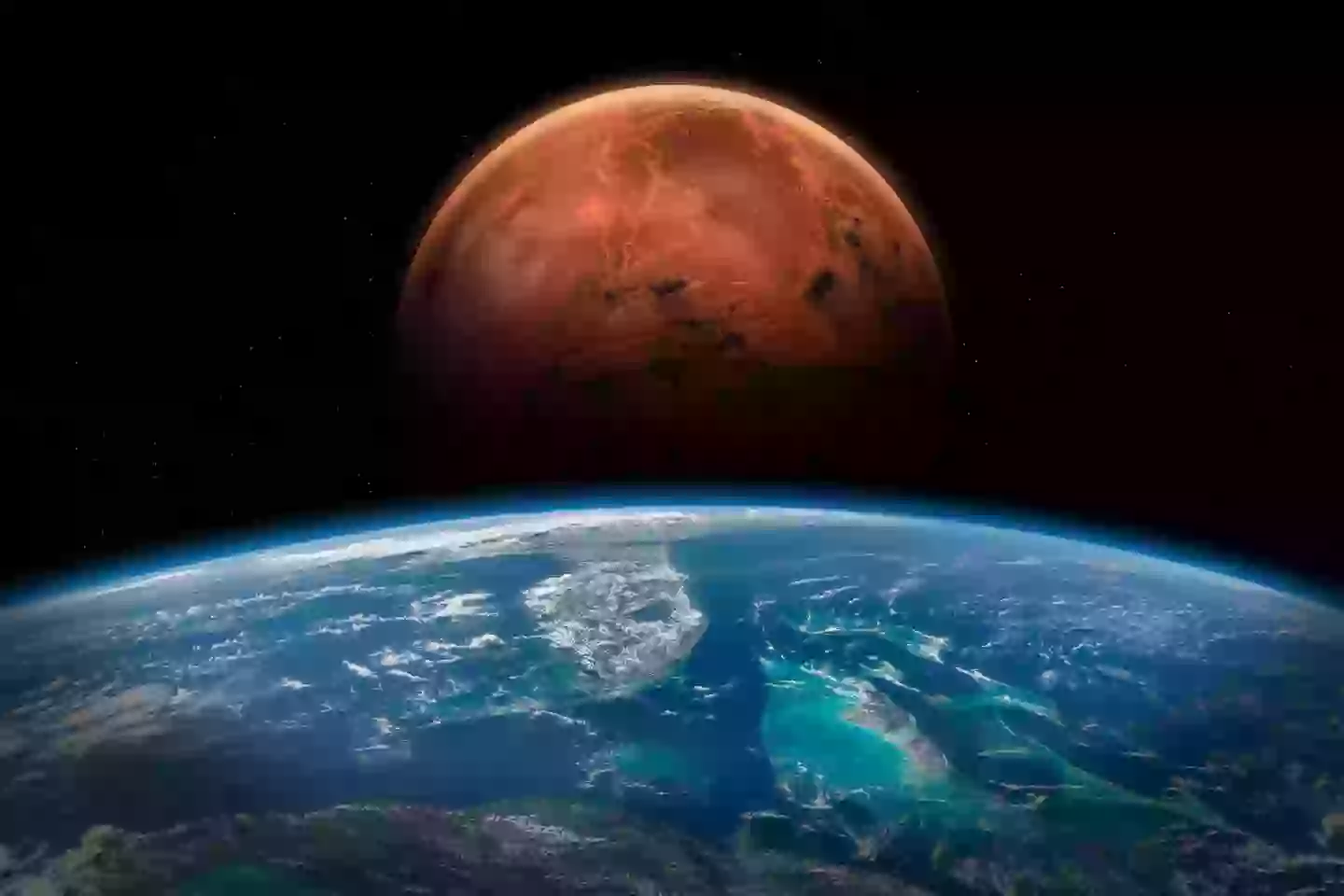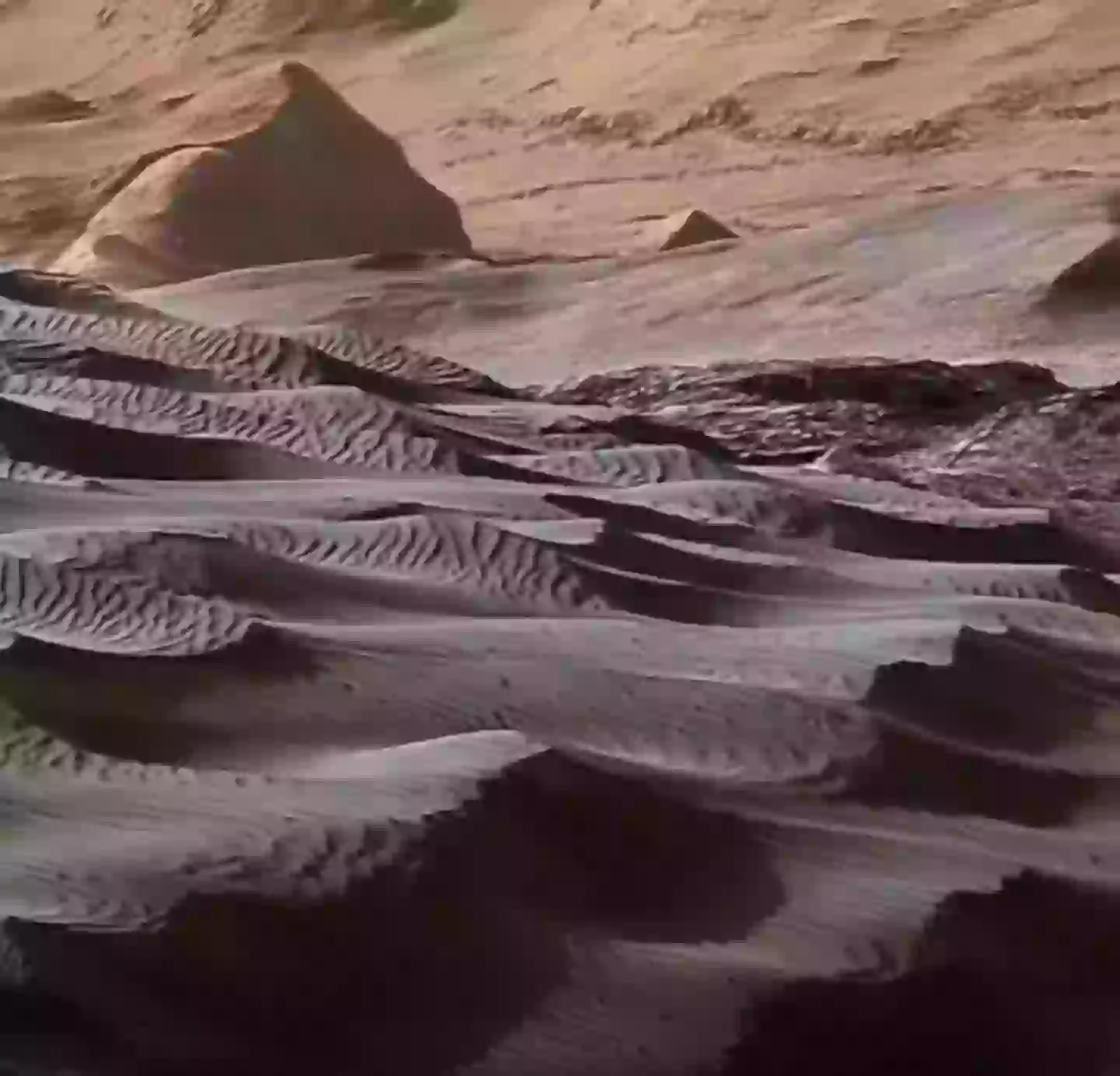NASA’s recent release of the clearest footage ever captured from Mars has left people in awe, but it has also sparked an interesting debate about the quality of surveillance here on Earth. While scientists can capture stunning images of the Martian dunes from 140 million miles away, many wonder why similar clarity is so elusive for security cameras used in daily life.
For decades, humanity has been fascinated by Mars, and the goal of sending a human to the red planet seems closer than ever. With advanced rovers like NASA’s Curiosity collecting data and sending back high-definition footage, we are getting a better understanding of Mars’ surface. Recently, a video of the Martian dunes taken by Curiosity was shared widely on social media, with many users commenting on how remarkable it was to see such clear images of another planet.
But as amazing as this footage is, it also brings up a curious issue that many have pointed out: Why is it that we can get such sharp and detailed images of Mars, but security footage on Earth often struggles to capture clear details, even in our own backyards?
The Clear Difference: Mars vs. Earth Surveillance
One of the most popular comments from users was a humorous yet thoughtful observation about the technology disparity. People remarked that while NASA can capture stunning footage of Mars from over 140 million miles away, many of us still struggle with low-quality security camera footage. One user pointed out, “But can’t get a decent picture of a person committing a crime on Earth.” Another chimed in, “Yet, my front yard camera can’t clearly see license plates or faces 20ft away.”
These comments, while funny, also underscore a serious issue that many people have experienced—poor quality security footage. For example, home security cameras often fail to capture crucial details like faces or license plates clearly, even at relatively close distances. The question is: How can we improve our everyday surveillance technology, so it’s as effective as the systems used for exploring Mars?

Mars has long fascinated humanity (Getty Stock Image)
The Technology Used for Mars Exploration vs. Earth Surveillance
While the jokes about Mars exploration cameras are fun, they highlight an important distinction between the technology used by NASA and that used by everyday security systems. The cameras used in space exploration are designed specifically for capturing high-definition images from vast distances and in extreme environments. These cameras are equipped with advanced sensors and technology that allow them to take clear and sharp images despite the challenges of space travel.
On the other hand, many security cameras used for surveillance on Earth, especially residential and business setups, are often low-cost, lower-resolution models. These cameras are designed to be affordable for widespread use, but they often sacrifice image quality for convenience and cost-effectiveness. Many businesses and homeowners rely on basic models that are not built to provide high-quality images, especially at night or in low-light conditions.
A Reddit user humorously added, “Do you think the people in charge of Mars exploration are also the ones who set up surveillance cameras?” This quip highlights how different the two industries are when it comes to technology and funding. NASA’s budget for space exploration allows them to develop cutting-edge equipment, while everyday security cameras are often limited by budget and technology available to the public.
The Push for Better Earth Surveillance
While Mars exploration technology is on the cutting edge, the quality of security cameras on Earth has yet to reach similar heights. This discrepancy calls for an improvement in the quality of surveillance technology available to the public. As cities grow and security concerns become more prevalent, better-quality surveillance equipment is needed to ensure safety and clarity in critical moments.
Several companies and startups are already working to bridge the gap, offering high-definition security cameras with advanced features like motion detection, night vision, and even facial recognition. These improvements are making it easier to get clearer footage of important events. In addition, the integration of artificial intelligence and machine learning is making it possible for cameras to distinguish between different objects, which can improve clarity and focus on specific areas of interest.
However, widespread adoption of these advanced technologies will take time and investment. Just like the technology that powered NASA’s Mars rovers, we need to continue investing in research and development to improve Earth-based security systems.

NASA releases footage of dunes on Mars (NASA)
Mars Exploration: A Step Toward Human Colonization
While the debate over surveillance cameras is ongoing, there’s another exciting aspect of NASA’s Mars exploration that has sparked public interest—human colonization. The idea of sending a human to Mars is something that has fascinated people for decades, and recent footage of the Martian landscape has only increased that excitement.
However, colonizing Mars comes with its own set of challenges. Mars’ lack of atmosphere means that humans would be exposed to higher levels of cosmic radiation, which poses significant health risks. Without the protection of an atmosphere or a magnetic field, astronauts would need to rely on advanced technologies to shield them from radiation, and even then, the risks would be high.
Despite these challenges, the idea of living on Mars remains a dream for many. Some have even joked about trying to colonize Jupiter instead, but this is, of course, not a viable option. For now, Mars remains the best candidate for human exploration, and efforts to send people to the planet continue to evolve.
Conclusion: Technology and Exploration Moving Forward
The recent release of high-definition footage of Mars serves as a reminder of how far technology has come in the realm of space exploration. At the same time, it sheds light on the challenges faced by everyday security systems. While we continue to push the boundaries of what’s possible in space, we also need to invest in improving technologies here on Earth, especially for critical applications like security.
For those interested in improving their personal security or understanding how technology impacts our lives, there are plenty of ways to get involved. Whether it’s upgrading to better surveillance equipment or staying informed about advancements in both space exploration and everyday technology, the possibilities are vast.
For more insights into how everyday technology impacts our lives, be sure to read these articles:
- 10 Signs You’re Eating Too Much Sugar
- 7 Words Depressed People Use More Often: How to Recognize the Signs and Offer Support
Exploring these topics will help you stay informed and prepared for the future, whether you’re investing in security systems or simply staying curious about the world around you.

